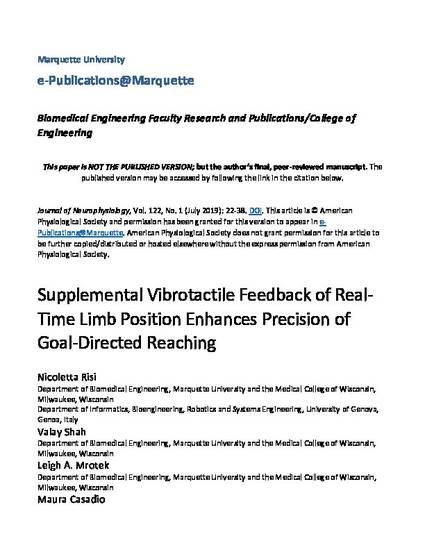
We examined vibrotactile stimulation as a form of supplemental limb state feedback to enhance planning and ongoing control of goal-directed movements. Subjects wore a two-dimensional vibrotactile display on their nondominant arm while performing horizontal planar reaching with the dominant arm. The vibrotactile display provided feedback of hand position such that small hand displacements were more easily discriminable using vibrotactile feedback than with intrinsic proprioceptive feedback. When subjects relied solely on proprioception to capture visuospatial targets, performance was degraded by proprioceptive drift and an expansion of task space. By contrast, reach accuracy was enhanced immediately when subjects were provided vibrotactile feedback and further improved over 2 days of training. Improvements reflected resolution of proprioceptive drift, which occurred only when vibrotactile feedback was active, demonstrating that benefits of vibrotactile feedback are due, in part to its integration into the ongoing control of movement. A partial resolution of task space expansion persisted even when vibrotactile feedback was inactive, demonstrating that training with vibrotactile feedback also induced changes in movement planning. However, the benefits of vibrotactile feedback come at a cognitive cost. All subjects adopted a stereotyped strategy wherein they attempted to capture targets by moving first along one axis of the vibrotactile display and then the other. For most subjects, this inefficient approach did not resolve over two bouts of training performed on separate days, suggesting that additional training is needed to integrate vibrotactile feedback into the planning and online control of goal-directed reaching in a way that promotes smooth and efficient movement.
Available at: http://works.bepress.com/robert_scheidt/79/
Accepted version. Journal of Neurophysiology, Vol. 122, No. 1 (July 2019): 22-38. DOI. © 2019 American Physiological Society. Used with permission.